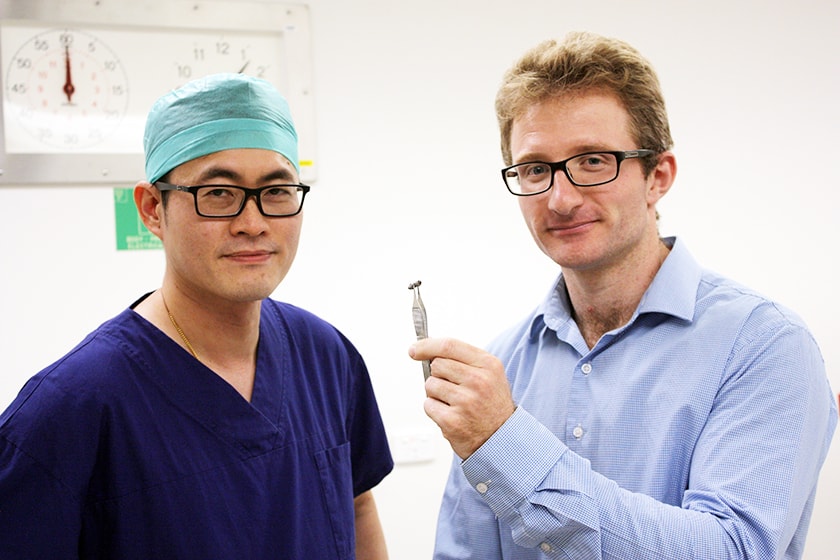New 3D bone screw set to revolutionise spinal surgery
20 Jun 2017

20 June 2017
St John of God Subiaco Hospital Head of the Neurosurgery and Spinal Surgery Department Professor Gabriel Lee said that using 3D printing technology the group had created a titanium expandable bone screw, which allows stronger bone fixation than a traditional screw.
“A spinal stabilisation and fusion may be required to treat a variety of conditions, including traumatic fractures, spinal degeneration, deformity and tumours,” Professor Lee said.
“During these procedures, a number of bone screws are typically implanted to stabilise the spine. These screws need to be placed carefully as they are often millimetres from critical blood vessels or nerve structures, and they need to be interconnected by plates or rods.
“However, elderly and osteoporotic patients may have quite weak bone, which causes screws to loosen or pull out over time. This significant complication can result in worsened pain and neurological disability – often requiring further surgery. This is costly and adds to the burden of the health system.”
Researchers from Curtin University are working closely together with surgeons at St John of God Subiaco Hospital and Royal Perth Hospital to solve this problem. Collaborators at The University of Western Australia and University College London are also assisting with developing the expandable screw.
Matthew Oldakowski, a PhD student from Curtin University, who is developing the expandable screw, said the patented design of the screw is at the heart of its functionality and has been made possible in part by the development of 3D printing with titanium.
“The novel design allows the screw to be easily expanded and able to be safely removed if required, which sets it apart from other expandable screws currently in the market.”
Indeed, this new screw design is seen as platform technology, which may be translated for use in orthopaedic surgeries throughout the skeleton.
Orthopaedic surgeon Professor Markus Kuster is leading an investigative study to evaluate the use of these new screws in hip surgery.
Recently the group was awarded a National Health and Medical Research Council Development Grant of $414,000, to take the research to the next stage of development. The funding will allow additional safety testing in the laboratory to strengthen its commercial potential, with the hope that a clinical trial will start in three years.
The work has been made possible in part by financial support from St John of God Subiaco Hospital and Curtin University, who are co-funding Matthew Oldakowski’s postdoctoral research fellowship and Kickstart funding from Curtin University in support of commercialisation activity.
You may be interested in

